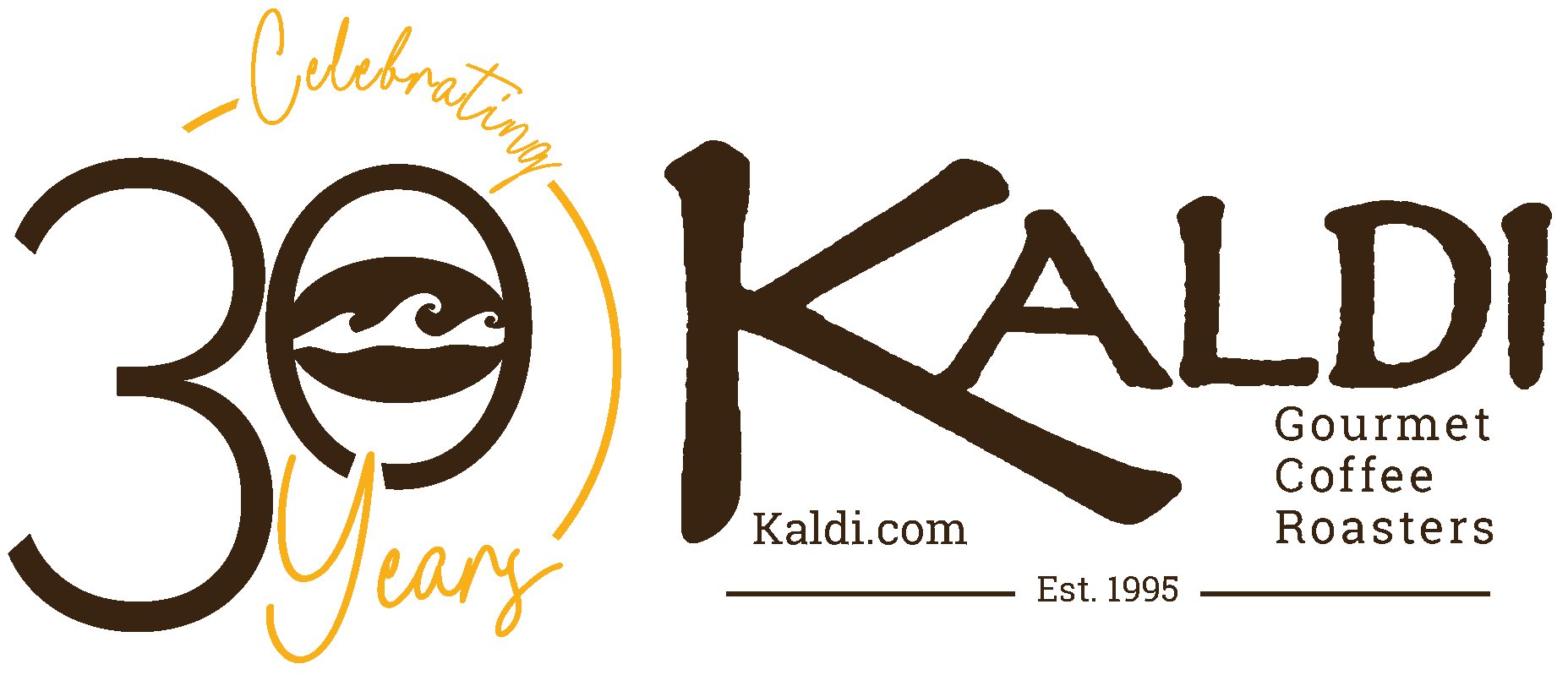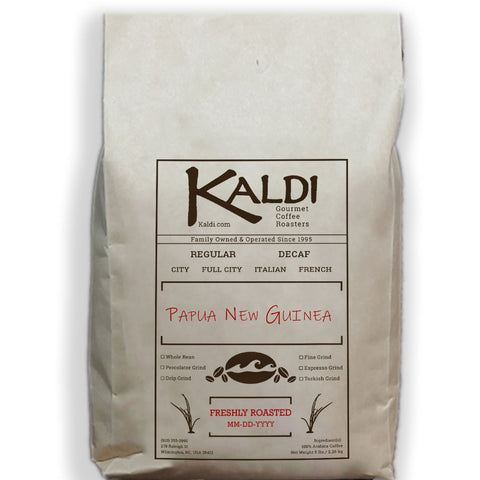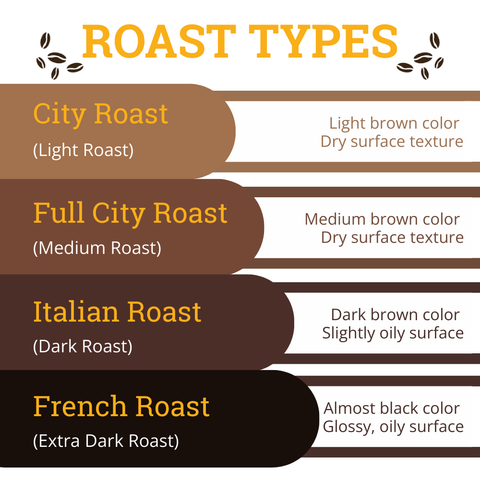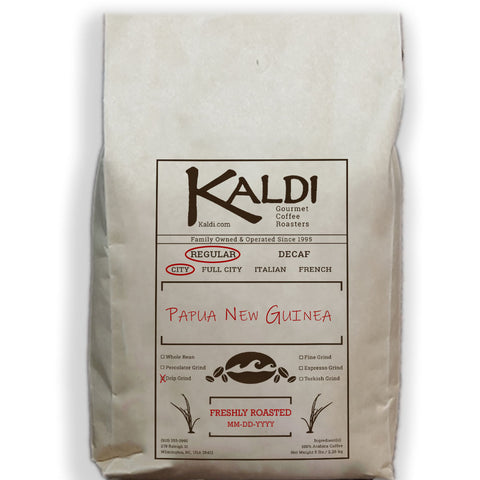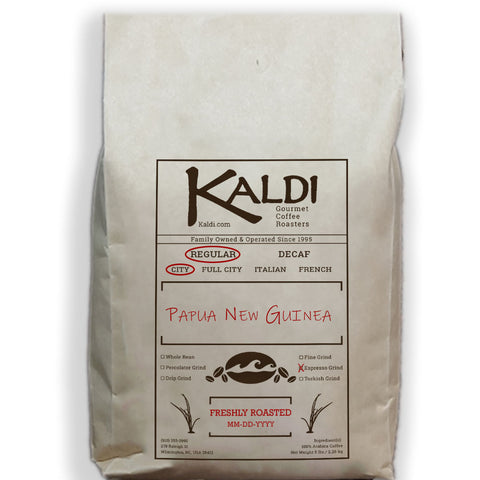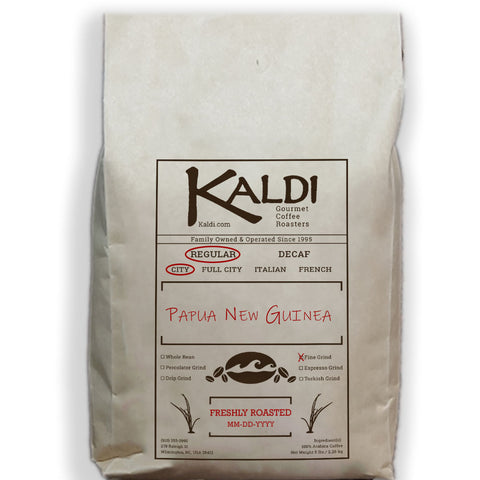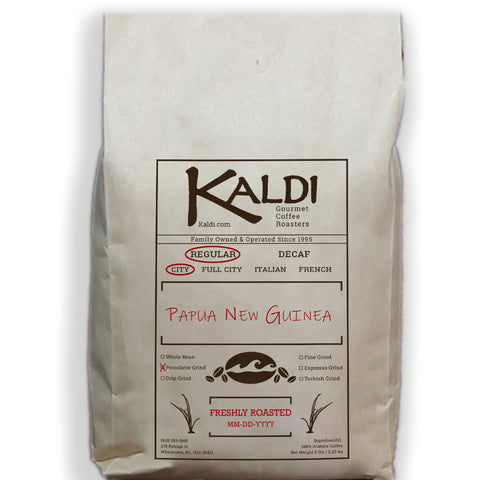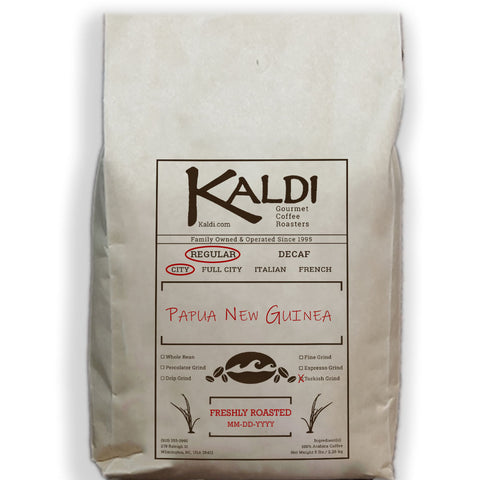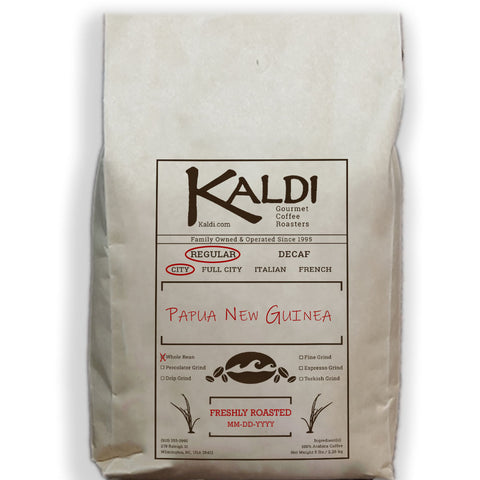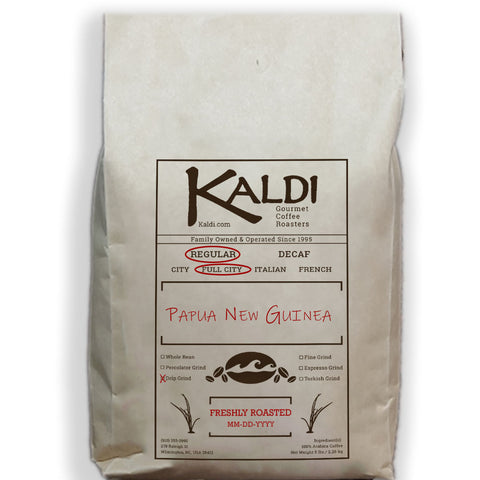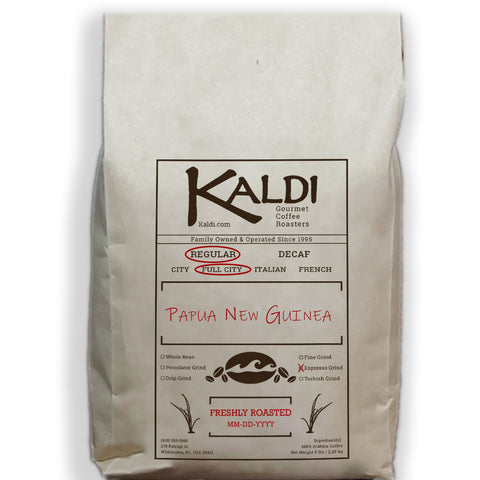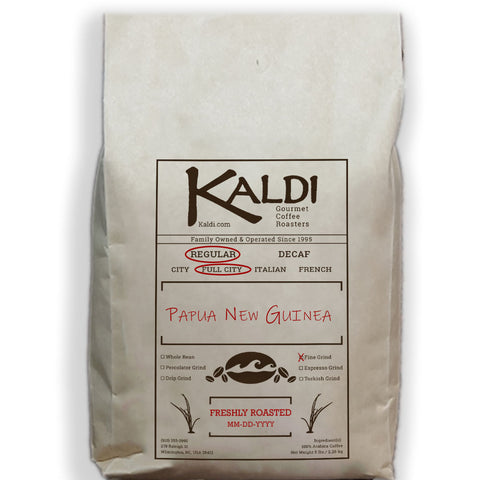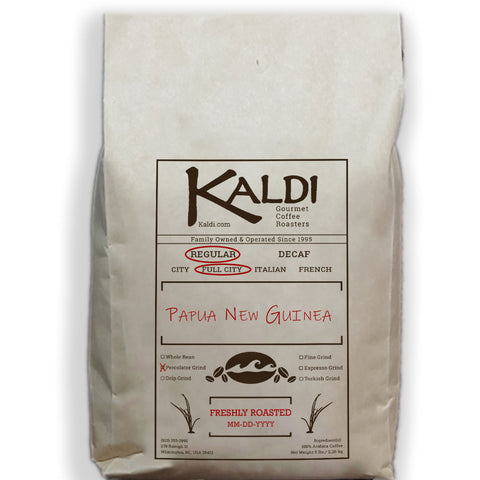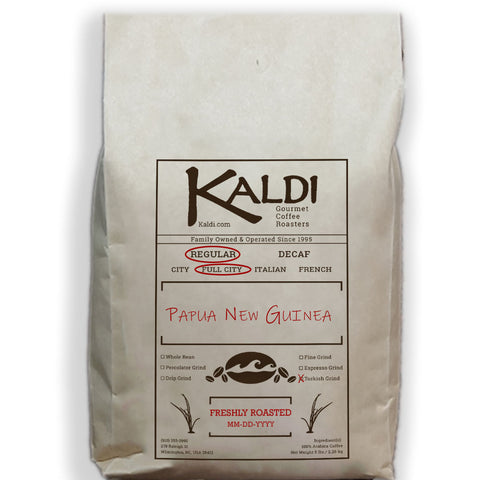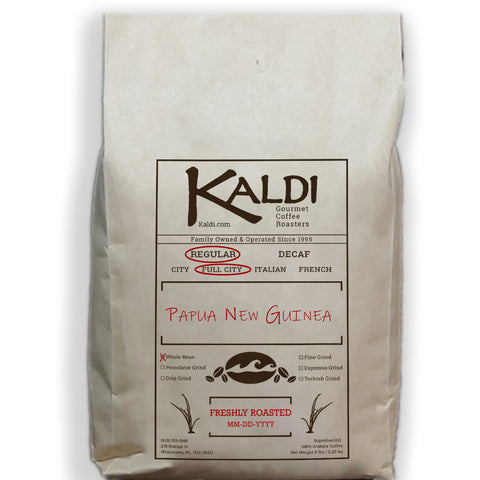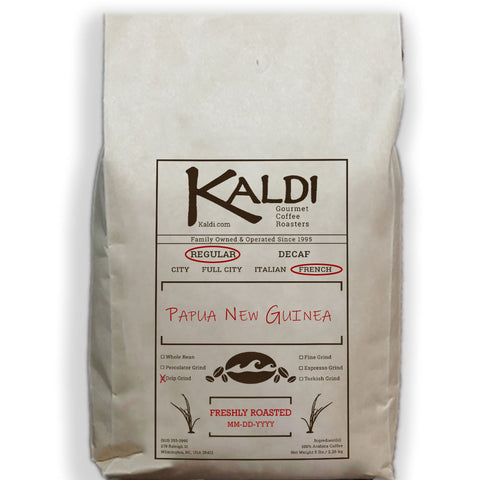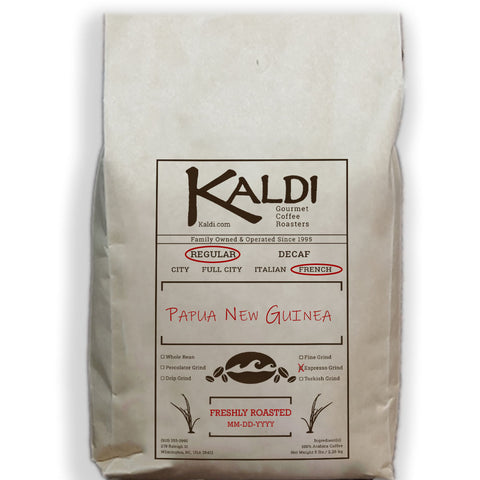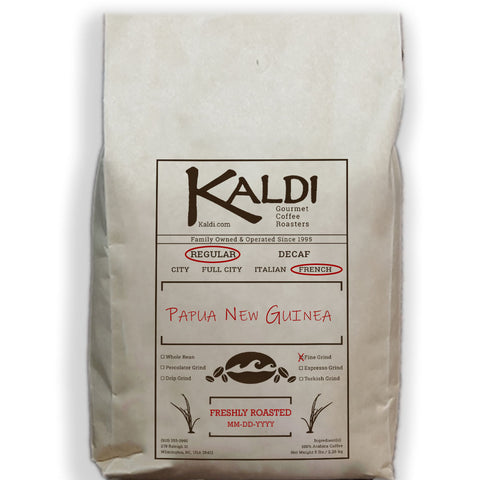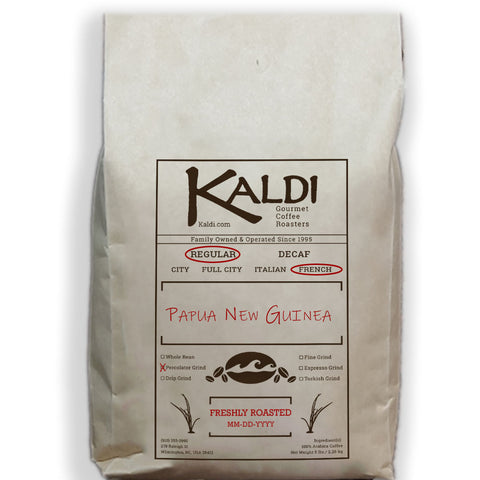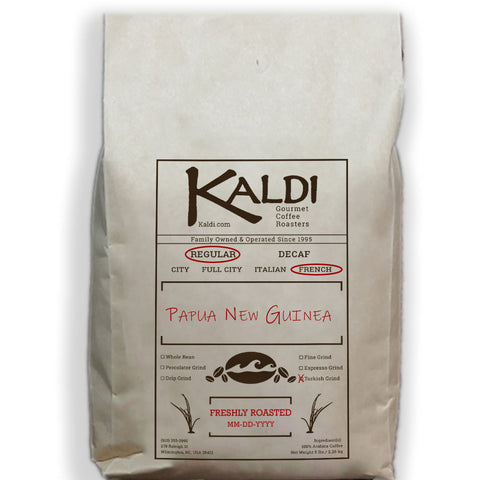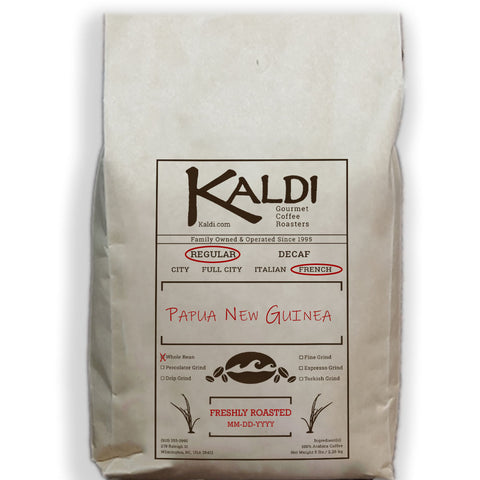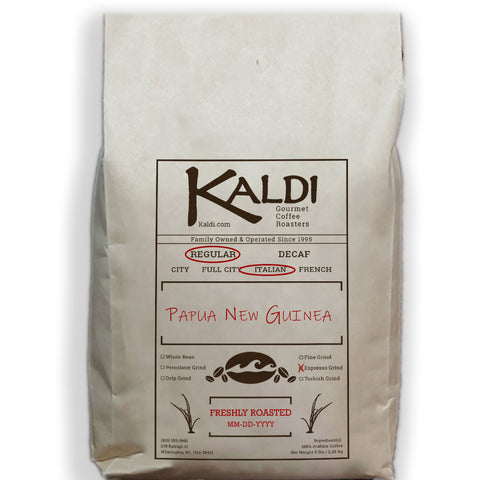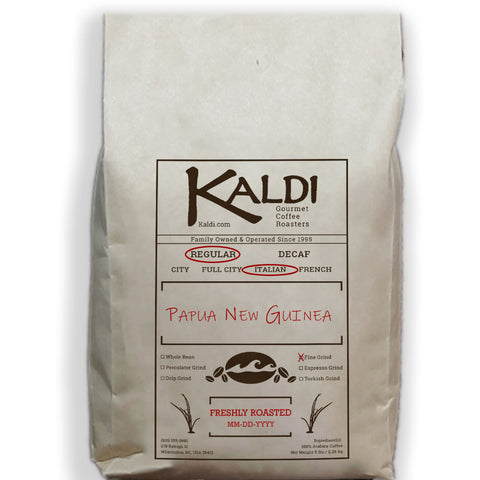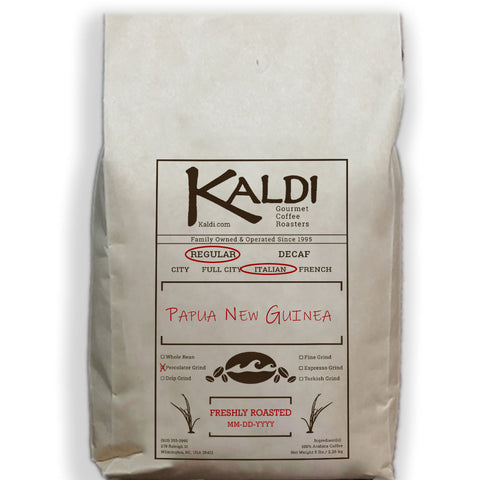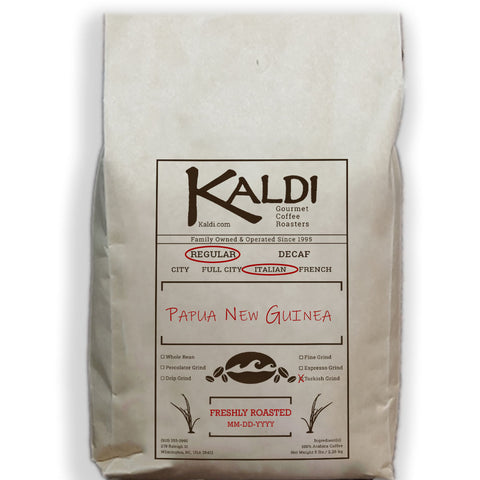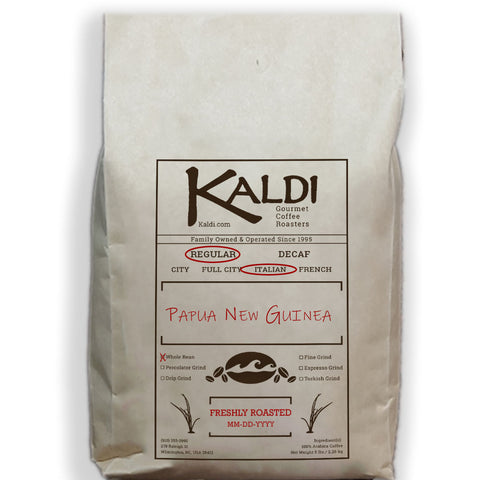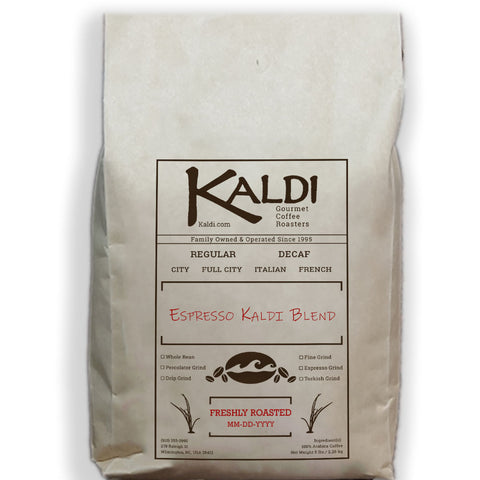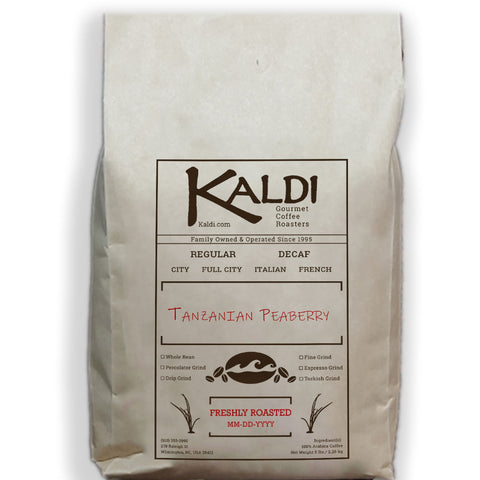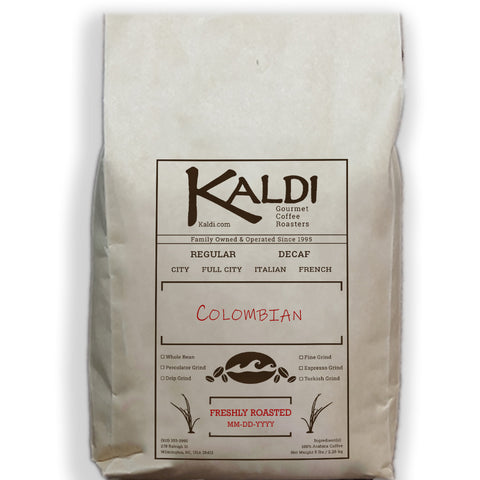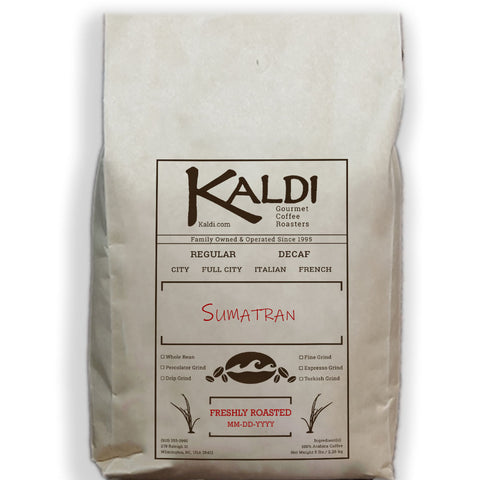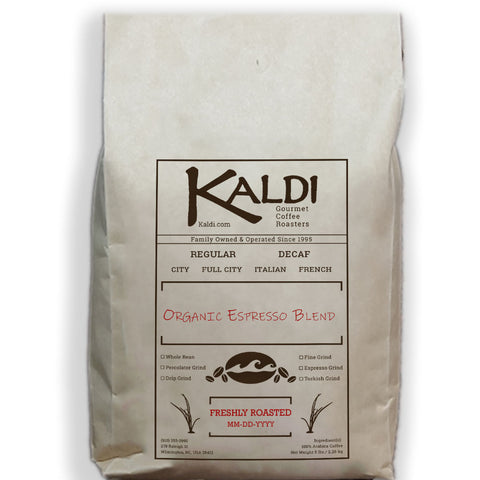Papua New Guinea A Grade
Regular price
$12.74 per lb
$63.70 Bulk Pricing for 5lb Bags
Wholesale Pricing - Papua New Guinea A Grade is available in 5 lb increments.
Wholesale Papua New Guinea A Grade - Premium Single-Origin for Cafes
Tasting Notes: Full body with bright acidity, featuring complex flavor profile of sweetness mixed with pungent citrus notes. Aromas of mango, orange, and papaya. Smooth body with berry, clean, consistent flavor, pleasant aftertaste, cedar, malt, and tea-like notes.
Why Cafes Choose This Coffee
Papua New Guinea A Grade coffee offers cafes a distinctive single-origin from the rugged Western and Eastern Highlands, grown at 1,400-1,800 meters above sea level by smallholder farmers maintaining traditional "coffee gardens." Unlike coffees from its Indonesian neighbors, this Papua New Guinea coffee is wet-processed, ensuring superior regularity and quality in the beans. Perfect for cafes seeking unique Pacific Island coffee with exceptional flavor complexity.
Menu Applications:
- Featured single-origin pour over highlighting tropical fruit notes
- Premium drip coffee for customers seeking unique origins
- Espresso blend component for brightness and fruit complexity
- Retail bags emphasizing rare Pacific Island origin
Origin & Traditional Coffee Gardens
Sourced from the rugged Western and Eastern Highlands at 1,400-1,800 meters above sea level, this coffee is grown by smallholder farmers maintaining traditional "coffee gardens." This high-variety, single-origin specialty coffee represents the Mile High offering from the Arokara Co-op, known for exceptional quality and consistency.
The wet-processing method sets this coffee apart from Indonesian neighbors, creating a cleaner cup profile that highlights the natural sweetness and fruit characteristics of the beans.
Brewing Recommendations for Cafes
-
Pour Over: 1:16 ratio, 200°F - showcases tropical fruit and citrus notes with clean finish
-
Drip/Batch Brew: 1:16 ratio - consistent, smooth cups with berry characteristics
-
French Press: 1:15 ratio, 4 minutes - brings out full body and malt sweetness
-
Cold Brew: 1:8 ratio, 12-16 hours - smooth, sweet with pronounced tropical fruit notes
Coffee Details
-
Region: Western and Eastern Highlands, Papua New Guinea
-
Altitude: 1,400-1,800 meters above sea level
-
Process: Wet-processed (washed)
-
Grade: A Grade
-
Cooperative: Arokara Co-op (Mile High offering)
-
Farming: Traditional "coffee gardens" by smallholder farmers
-
Body: Full, smooth
-
Acidity: Bright
Wholesale Ordering & Custom Roasting
Available in 5 lb bags and larger bulk quantities. Every order is custom roasted to your specifications - we roast Monday through Friday and most orders ship the same or next business day for maximum freshness.
Wholesale Benefits:
- Competitive bulk pricing for cafes and foodservice operations
- Unique Pacific Island origin differentiates your menu
- A Grade quality ensures consistent excellence
- Complex tropical fruit profile appeals to specialty coffee enthusiasts
- Free shipping available on qualifying orders
Contact us for volume pricing. Papua New Guinea A Grade is the distinctive, high-quality coffee that offers customers a unique Pacific Island experience.
